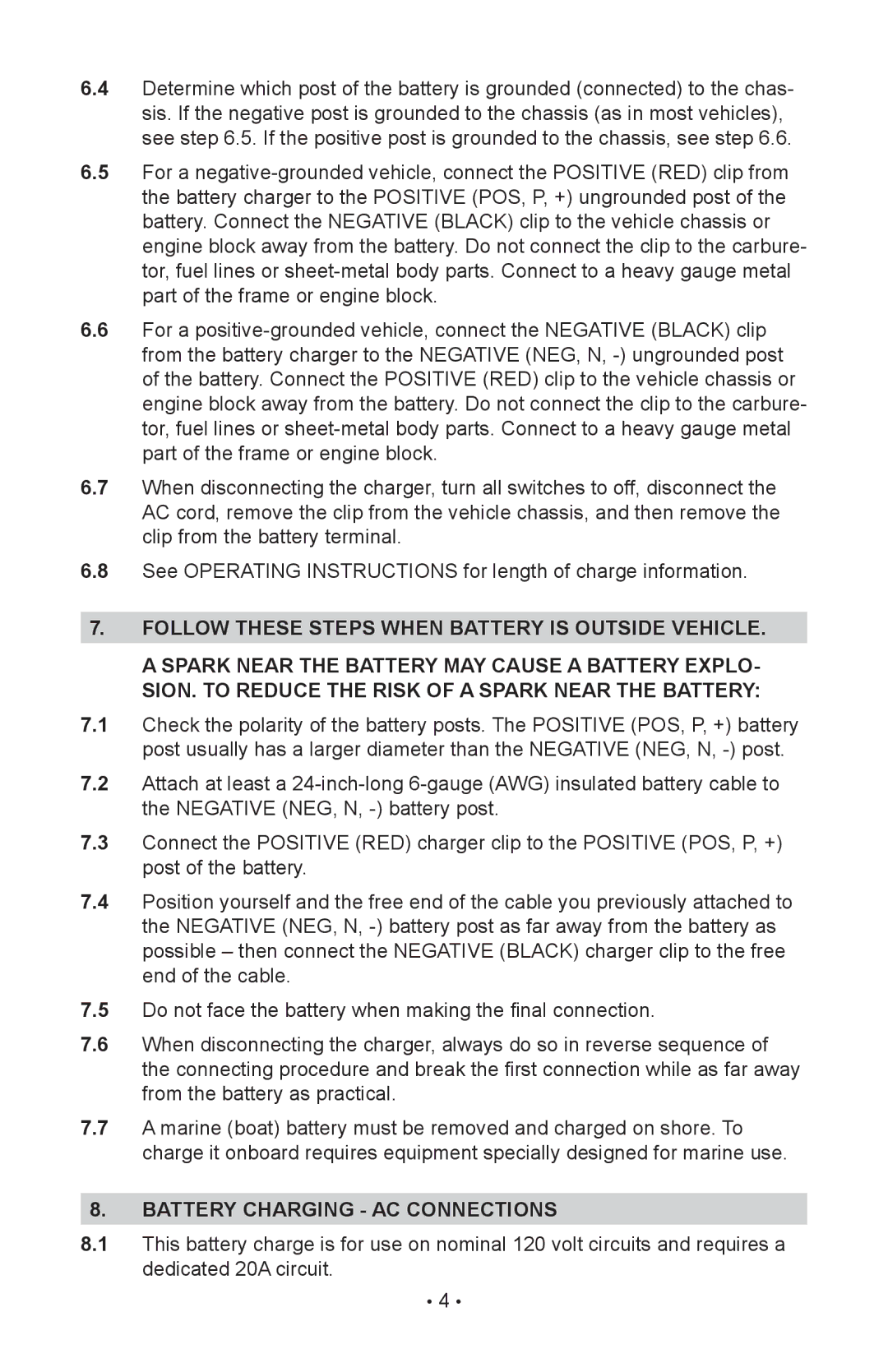
6.4Determine which post of the battery is grounded (connected) to the chas- sis. If the negative post is grounded to the chassis (as in most vehicles), see step 6.5. If the positive post is grounded to the chassis, see step 6.6.
6.5For a
6.6For a
6.7When disconnecting the charger, turn all switches to off, disconnect the AC cord, remove the clip from the vehicle chassis, and then remove the clip from the battery terminal.
6.8See OPERATING INSTRUCTIONS for length of charge information.
7.FOLLOW THESE STEPS WHEN BATTERY IS OUTSIDE VEHICLE.
A SPARK NEAR THE BATTERY MAY CAUSE A BATTERY EXPLO- SION. TO REDUCE THE RISK OF A SPARK NEAR THE BATTERY:
7.1Check the polarity of the battery posts. The POSITIVE (POS, P, +) battery post usually has a larger diameter than the NEGATIVE (NEG, N,
7.2Attach at least a
7.3Connect the POSITIVE (RED) charger clip to the POSITIVE (POS, P, +) post of the battery.
7.4Position yourself and the free end of the cable you previously attached to the NEGATIVE (NEG, N,
7.5Do not face the battery when making the final connection.
7.6When disconnecting the charger, always do so in reverse sequence of the connecting procedure and break the first connection while as far away from the battery as practical.
7.7A marine (boat) battery must be removed and charged on shore. To charge it onboard requires equipment specially designed for marine use.
8.battery charging - ac connections
8.1This battery charge is for use on nominal 120 volt circuits and requires a dedicated 20A circuit.
•4 •
